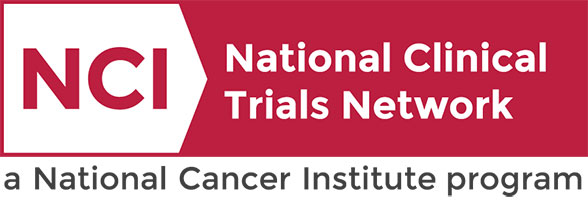Clinical Trials Search at Vanderbilt-Ingram Cancer Center
Testing Longer Duration Radiation Therapy Versus the Usual Radiation Therapy in Patients With Cancer That Has Spread to the Brain
This phase III trial compares the effectiveness of fractionated stereotactic radiosurgery (FSRS) to usual care stereotactic radiosurgery (SRS) in treating patients with cancer that has spread from where it first started to the brain. Radiation therapy uses high energy x-rays to kill tumor cells and shrink tumors. FSRS delivers a high dose of radiation to the tumor over 3 treatments. SRS is a type of external radiation therapy that uses special equipment to position the patient and precisely give a single large dose of radiation to a tumor. FSRS may be more effective compared to SRS in treating patients with cancer that has spread to the brain.
Not Available
III
Cmelak, Anthony
NCT06500455
NRGNEUBN013
Testing Lutetium Lu 177 Dotatate in Patients With Somatostatin Receptor Positive Advanced Bronchial Neuroendocrine Tumors
Lung
Lung
This phase II trial studies the effect of lutetium Lu 177 dotatate compared to the usual treatment (everolimus) in treating patients with somatostatin receptor positive bronchial neuroendocrine tumors that have spread to other places in the body (advanced). Lutetium Lu 177-dotate is a radioactive drug. It binds to a protein called somatostatin receptor, which is found on some neuroendocrine tumor cells. Lutetium Lu 177-dotatate builds up in these cells and gives off radiation that may kill them. It is a type of radioconjugate and a type of somatostatin analog. Lutetium Lu 177 dotatate may be more effective than everolimus in shrinking or stabilizing advanced bronchial neuroendocrine tumors.
Lung
II
Ramirez, Robert
NCT04665739
SWOGTHOA021901
TPIV100 and Sargramostim for the Treatment of HER2 Positive, Stage II-III Breast Cancer in Patients With Residual Disease After Chemotherapy and Surgery
This phase II trial studies how well TPIV100 and sargramostim work in treating patients with HER2 positive, stage II-III breast cancer that has residual disease after chemotherapy prior to surgery. It also studies why some HER2 positive breast cancer patients respond better to chemotherapy in combination with trastuzumab and pertuzumab. TPIV100 is a type of vaccine made from HER2 peptide that may help the body build an effective immune response to kill tumor cells that express HER2. Sargramostim increases the number of white blood cells in the body following chemotherapy for certain types of cancer and is used to alert the immune system. It is not yet known if TPIV100 and sargramostim will work better in treating patients with HER2 positive, stage II-III breast cancer.
Not Available
II
Not Available
NCT04197687
VICCBRE2241
Safety and Tolerability of Ziftomenib Combinations in Patients With Relapsed/Refractory Acute Myeloid Leukemia
The safety, tolerability, and antileukemic response of ziftomenib in combination with standard of care treatments for patients with relapsed/refractory acute myeloid leukemia will be examined with the following agents: FLAG-IDA, low-dose cytarabine, and gilteritinib.
Not Available
I
Fedorov, Kateryna
NCT06001788
VICC-DTHEM23484P
Expanded Access Program (EAP) for Obecabtagene Autoleucel (Obe-Cel) Out-of-Specification (OOS) in Adult Patients with Acute Lymphoblastic Leukemia
Leukemia
Leukemia
Leukemia
N/A
Oluwole, Olalekan
VICC-CTT25006
Window Trial of Fluorescently Labeled Panitumumab (Panitumumab-IRDye800) in Head and Neck Cancer
Multiple Cancer Types
Head/Neck,
Phase I
I
Rosenthal, Eben
VICCHNP24602
High-Resolution Specimen PET-CT Imaging for the Intraoperative Visualization of Resection Margins: An Exploratory Study
Miscellaneous
Miscellaneous
Miscellaneous
I
Topf, Michael
VICCHNP24616
Pilot Study Assessment of Bone Mineral Density Changes During Treatment with Anti-PD-1 Immunotherapy Agents
Miscellaneous
Miscellaneous
Miscellaneous
N/A
Sharpe, Jessica
VICCMD25019
Genetic Testing to Select Therapy for the Treatment of Advanced or Metastatic Kidney Cancer, OPTIC RCC Study
Kidney (Renal Cell)
Kidney (Renal Cell)
This phase II trial tests whether using genetic testing of tumor tissue to select the optimal treatment regimen works in treating patients with clear cell renal cell (kidney) cancer that has spread to other places in the body (advanced or metastatic). The current Food and Drug Administration (FDA)-approved regimens for advanced kidney cancer fall into two categories. One treatment combination includes two immunotherapy drugs (nivolumab plus ipilimumab), which are delivered by separate intravenous infusions into a vein. The other combination is one immunotherapy drug (nivolumab infusion) plus an oral pill taken by mouth (cabozantinib). Nivolumab and ipilimumab are "immunotherapies" which release the brakes of the immune system, thus allowing the patient's own immune system to better kill cancer cells. Cabozantinib is a "targeted therapy" specifically designed to block certain biological mechanisms needed for growth of cancer cells. In kidney cancer, cabozantinib blocks a tumor's blood supply. The genetic (DNA) makeup of the tumor may affect how well it responds to therapy. Testing the makeup (genes) of the tumor, may help match a treatment (from one of the above two treatment options) to the specific cancer and increase the chance that the disease will respond to treatment. The purpose of this study is to learn if genetic testing of tumor tissue may help doctors select the optimal treatment regimen to which advanced kidney cancer is more likely to respond.
Kidney (Renal Cell)
II
Rini, Brian
NCT05361720
VICCURO21103
Imaging Biomarkers of Lymphatic Dysfunction
Breast
Breast
Persons with secondary arm and/or upper quadrant lymphedema following cancer therapies commonly are prescribed complete decongestive therapy as a course of management of their lymphedema. The investigators will perform a repeated-measures cross-over trial to test the hypothesis that mobilization of protein enriched hardened tissue using graded negative pressure therapy in conjunction with complete decongestive therapy (CDT) is more effective to standard CDT alone for secondary lymphedema management.
Breast
N/A
Donahue, Manus
NCT03760744
VICCBRE18156


